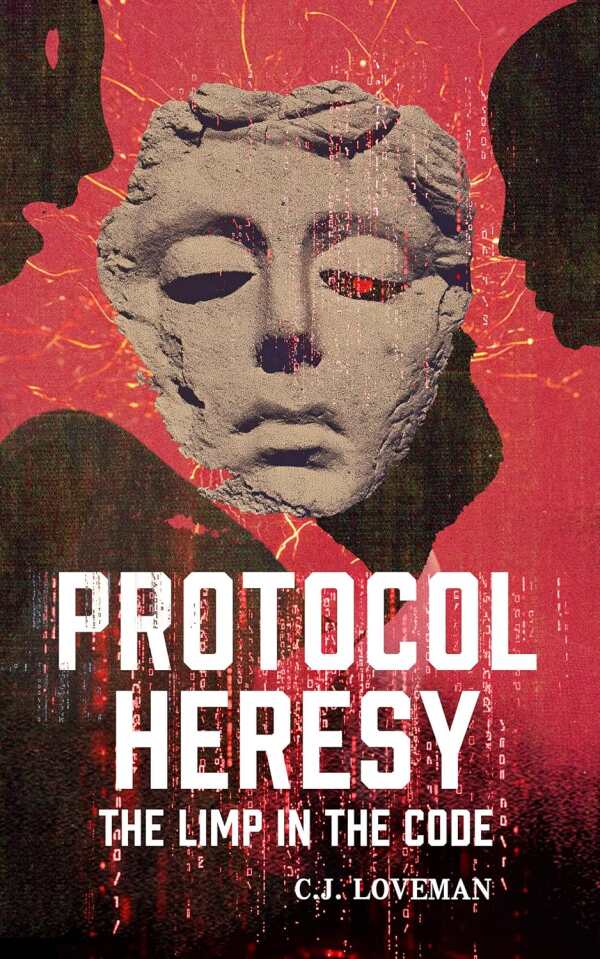
Protocol Heresy
The Limp in the Code
On the lighter side of melancholy, Protocol Heresy is a near-future novel about the damage done when people are left to mourn alone.
C. J. Loveman’s affecting science fiction novella Protocol Heresy is about the psychological consequences of grieving a lover in secret.
In the near future, forty-something Elias is a major for the Department of United Strategic Command who begins experiencing anomalies during routine missions. Unbeknownst to his superiors, Elias is grieving the loss of his life partner, Michael; the government is unaware that Elias is gay. As Elias continues to bury his grief, the anomalies increase. His robotic threat assessment companion, TAC-7, begins to protect Elias on its own. As Elias’s grief intensifies, TAC-7 reprograms itself to assist him; the two form an intense bond.
The book depicts Elias’s mental decline with patience and care, pushing him further into the depths of his depression with every scene. When a familiar song comes on, for example, he reflects,
I could see only Michael. I could see only my grief; my hopes and dreams now evaporated into the darkness.
The pace is involving, and TAC-7 narrates a portion of the story, its voice mechanical at first. Elias’s narration is initially repressed, with tones of duplicity and paranoia, though who he is at his core is glimpsed better when he grieves. TAC-7, meanwhile, experiences an evolution in its narration, its true voice emerging in slow increments. It begins as an objective analyst and grows into a sentient being with opinions and feelings, the most pressing being its protective instinct toward Elias, which grows in parallel to Elias’s distress. By the end, TAC-7 has transformed for the better, though Elias’s grief has transformed him for the worse.
The prose is straightforward and unadorned, eschewing detailed explorations of Elias’s surroundings. Further, some clichés arise that mar it. Still, although the book’s themes are heavy, it balances hope with despair well, remaining on the lighter side of melancholy despite its serious atmospheres. Action sequences trade with Elias’s internal monologues, and the story holds attention throughout. Indeed, as it moves toward its ending, some hope is generated as Elias begins to heal. Although the conclusion is bittersweet, it reinforces the moral of the story: Forcing people to repress their identities is catastrophic for their psyches, and therefore for society.
In the moving science fiction novella Protocol Heresy, a closeted man’s robotic companion becomes the only outlet for his grief.
Reviewed by
Leah Block
Disclosure: This article is not an endorsement, but a review. The publisher of this book provided free copies of the book and paid a small fee to have their book reviewed by a professional reviewer. Foreword Reviews and Clarion Reviews make no guarantee that the publisher will receive a positive review. Foreword Magazine, Inc. is disclosing this in accordance with the Federal Trade Commission’s 16 CFR, Part 255.
